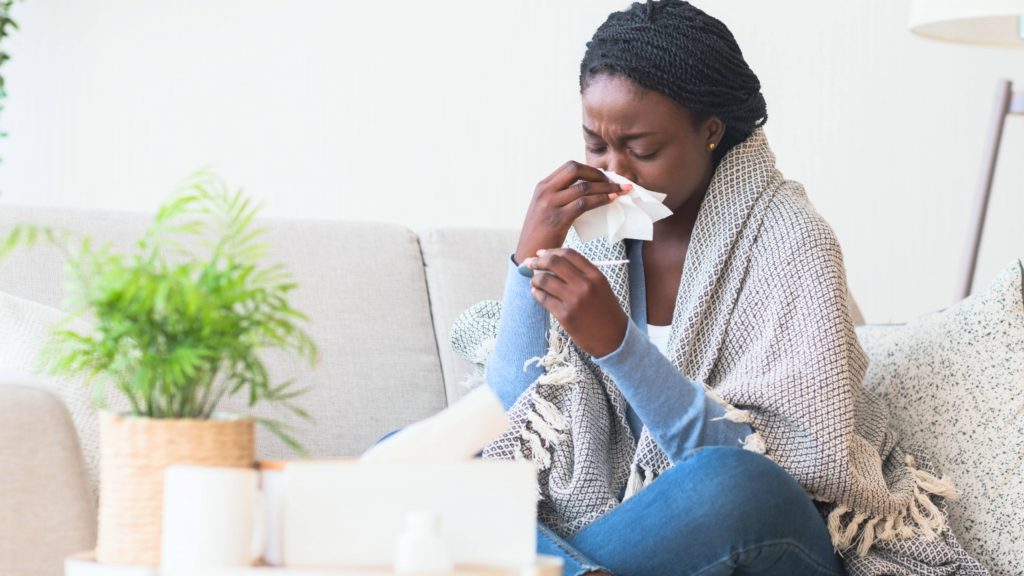
Providing care at home for a person sick with COVID-19? Or caring for yourself at home? Understand when emergency care is needed and what you can do to prevent the spread of infection.
______________________________
If you have coronavirus disease 2019 (COVID-19) and you're caring for yourself at home or you're caring for a loved one with COVID-19 at home, you might have questions. How do you know when emergency care is needed? How long is isolation necessary? What can you do to prevent the spread of germs? How can you support a sick loved one and manage your stress? Here's what you need to know.
At-home treatment
Most people who become sick with COVID-19 will only experience mild illness and can recover at home. Symptoms might last a few days, and people who have the virus might feel better in about a week. Treatment is aimed at relieving symptoms and includes rest, fluid intake and pain relievers.
Follow the health care provider's recommendations about care and home isolation for yourself or your loved one. Talk to the provider if you have any questions about treatments. Help the sick person get groceries and any medications and, if needed, take care of his or her pet.
It's also important to consider how caring for a sick person might affect your health. If you are older or have an existing chronic medical condition, such as heart or lung disease or diabetes, you may be at higher risk of serious illness with COVID-19. You might consider isolating yourself from the sick person and finding another person to provide care.
Emergency warning signs
Carefully monitor yourself or your loved one for worsening symptoms. If symptoms appear to be getting worse, call the health care provider.
If you or the person with COVID-19 experiences emergency warning signs, medical attention is needed immediately. Call 911 or your local emergency number if the sick person can't be woken up or you notice any emergency signs, including:
- Trouble breathing
- Persistent chest pain or pressure
- New confusion
- Bluish lips or face
Protecting others if you're ill
If you're ill with COVID-19, you can help prevent the spread of infection with the COVID-19 virus.
- Stay home from work, school and public areas unless it's to get medical care.
- Avoid using public transportation, ride-sharing services or taxis.
- Stay isolated in one room, away from your family and other people, as much as possible. This includes eating in your room. Open windows to keep air circulating. Use a separate bathroom, if possible.
- Avoid shared space in your home as much as possible. When using shared spaces, limit your movements. Keep your kitchen and other shared spaces well ventilated. Stay at least 6 feet (2 meters) away from your family members.
- Clean often-touched surfaces in your separate room and bathroom, such as doorknobs, light switches, electronics and counters, every day.
- Avoid sharing personal household items, such as dishes, towels, bedding and electronics.
- Wear a face mask when near others. Change the face mask each day.
- If wearing a face mask isn't possible, cover your mouth and nose with a tissue or elbow when coughing or sneezing. Afterward, throw away the tissue or wash the handkerchief.
- Frequently wash your hands with soap and water for at least 20 seconds, or use an alcohol-based hand sanitizer that contains at least 60% alcohol.
Click here to learn more about:
- Protecting yourself while caring for someone with COVID-19
- Ending isolation
- Coping with caregiver stress
This article is written by Mayo Clinic Staff. Find more health and medical information on mayoclinic.org.
Information in this post was accurate at the time of its posting. Due to the fluid nature of the COVID-19 pandemic, scientific understanding, along with guidelines and recommendations, may have changed since the original publication date.
Check the Centers for Disease Control and Prevention website for additional updates on COVID-19. For more information and all your COVID-19 coverage, go to the Mayo Clinic News Network and mayoclinic.org.







